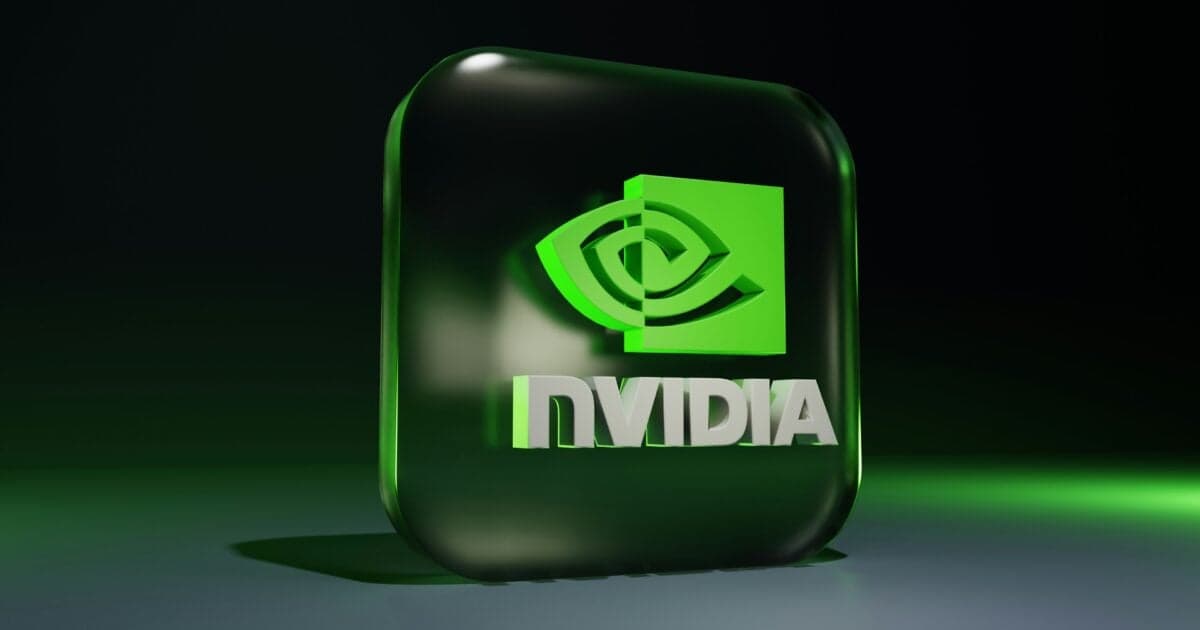Is Nvidia (NVDA) Still the Top AI Stock to Buy After Its Earnings Report?


Artificial-intelligence ("AI") poster child Nvidia (NVDA) just released second-quarter earnings on Wednesday.
The AI boom has propelled Nvidia to the top of the market. It's now the largest company on U.S. stock exchanges. But that success also puts the company under the microscope...
Instead of following dozens of companies to get an idea of how AI spending is going, many folks find it easier to just follow Nvidia. After all, its data-center chips dominate the sector with 90% market share.
That makes Nvidia a decent indicator of how the AI infrastructure buildout is going.
So last night's report was closely watched. And it disappointed investors a little... The stock fell roughly 3% in after-hours trading.
That's not much of a slide for a company Nvidia's size. But the reasons for the dip might not seem obvious at first.
Let's dive into what the company said, and what investors are keying in on. First, a quick recap of Nvidia's business...
How Nvidia Powers the AI Stock Boom
Nvidia designs semiconductors called graphics processing units ("GPUs"). As I covered yesterday...
[These chips] sit inside a computer and render images on the computer screen. GPUs work with the central brain of the computer (the central processing unit, or "CPU") to run software. Without a graphics card, your computer would bog down with calculations, and your screen would be blank.
It first focused on designing these chips for video games and even cryptocurrency mining.
But these GPUs are also well-suited for generative AI. Nvidia now designs these chips for use in data centers. They provide the computational "horsepower" for famous AI models like ChatGPT.
That's critical – because AI models need a ton of horsepower. It's why companies are pledging to spend hundreds of billions of dollars on building out AI infrastructure...
By the end of the decade, the International Energy Agency ("IEA") estimates that data-center energy usage will more than double to 945 terawatt-hours. That's more than the entire country of Japan uses today.
It's easy to see why investors see Nvidia as a bellwether for AI. So how is its business doing today?
Nvidia Q2 2025 Earnings: What Investors Should Know
In the three months ending July 27, Nvidia's revenue surged 56% year over year to $46.7 billion. Earnings jumped 59% to $1.05 per share over the same period. Both results beat Wall Street's expectations.
Looking ahead to the third quarter, Nvidia expects revenue of $54 billion, a 50% jump from the same quarter a year ago. That's better than the $53 billion that Wall Street is currently projecting in that quarter.
This growth rate is incredible for a company with a market cap of more than $4 trillion. And Nvidia expects the growth to continue.
As Chief Financial Officer Colette Kress explained on the earnings call...
Our full stack AI solutions for cloud service providers, neo clouds, enterprises, and sovereigns are all contributing to our growth. We are at the beginning of an industrial revolution that will transform every industry. We see $3 trillion to $4 trillion in AI infrastructure spend in the by the end of the decade.
On the surface, it looked like another blowout quarter for Nvidia. But investors still sent the stock 3% lower in after-hours trading.
The reason for the fall was Nvidia's data-center segment...
Data-center revenue, which serves as a shorthand for AI demand – and makes up nearly 90% of Nvidia's total sales – came in at $41.1 billion. That was an increase of 56% year-over-year, but it was still just below Wall Street's estimate of $41.3 billion.
It was a small miss in the grand scheme of things. Investors are laser-focused on any signs of weakness in this sector. But we shouldn't see this as a warning sign for AI demand.
Nvidia had more uncertain news to report in another area investors are watching...
Nvidia's China Update: H20 Chips and Revenue Outlook
Nvidia has been lobbying to keep its ability to export chips to China.
In July, the company agreed to pay the U.S. government 15% of all revenue from China, in exchange for licenses to export its H20 AI chip to the country. But it's still waiting for the government to make it official.
The H20 is a GPU designed for AI and deep learning. Once, it was the most advanced chip in Nvidia's lineup – which raised concerns from the government. The Trump administration halted H20 sales to China in April, aiming to keep the U.S. competitive and protect national security.
Today, though, the H20 is less powerful than Nvidia's best processors. If the government follows through on easing restrictions, it would unlock a huge source of revenue for Nvidia.
The company gave an update on where the H20 chip stands on Wednesday...
Nvidia didn't ship any H20 chips to China in the second quarter due to the restrictions. The company had previously estimated those sales would have been worth about $8 billion.
On the earnings call, Kress said that the U.S. has approved licenses for several of Nvidia's customers to allow H20 shipments. But Nvidia hasn't shipped any H20s to China based on those licenses just yet.
As a result, Nvidia is not including H20 sales in its third-quarter guidance. But, if "geopolitical issues subside" (as Kress put it), the H20 chip could contribute between $2 billion and $5 billion in revenue in the third quarter.
This situation is worth watching. If H20 chips do start shipping out to China in the third quarter, it could provide an even bigger tailwind to Nvidia's sales growth.
Is Nvidia Stock a Buy Today?
As I wrote in Nvidia's earnings preview yesterday, Nvidia has a strong business...
It gets a great grade on our proprietary Stansberry Score. Nvidia's B grade for Financials is no surprise, given how strong the most recent growth was. And the company generates tons of free cash flow ("FCF"), too...
Simply put, FCF is a measure of a company's cash profits after capital expenditures. The company can use this money to reinvest in the business, or to reward shareholders through buybacks and dividends.
In the last two quarters, Nvidia has generated $39.5 billion in FCF – up 39% year-over-year. On revenue of $90.7 billion for the first half of its fiscal year, that comes out to an FCF margin (FCF divided by revenue) of 43.5%.
That's an incredibly high ratio. For comparison, the average company in the S&P 500 Index has an FCF margin of 17%.
To put this another way, for every U.S. dollar of revenue Nvidia brings in, roughly 44 cents trickles down to FCF. So Nvidia's A grade for Capital Efficiency is well deserved.
However, even after its recent dip, Nvidia still gets a C grade from us in the Valuation category... At a price-to-earnings ratio of 53, Nvidia's shares are still more expensive than the S&P 500 at 27 times earnings.
But as we've gone over, Nvidia has much stronger financials than the average company. And it's still growing at an incredible rate for a $4 trillion business.
Investors may be overly cautious about this company today. As far as investments in the AI boom, it doesn't get much better than Nvidia.
Beyond Nvidia: Other AI Stocks and Emerging Tech to Watch
More than 400 federal agencies have joined forces with America's top tech companies to fuel innovation in AI and robotics...
The plan aims to unleash a wave of innovation centered on AI and automation.
By September 30, every agency – from the Treasury to the Social Security Administration – must have a plan to weave advanced AI and autonomous systems into its operations.
That's why Stansberry Innovations Report editor Eric Wade just went live with a special presentation detailing the government's "AI Master Plan" and how it could add as much as $50 trillion to the U.S. economy in the coming years.
Eric sees this Master Plan impacting companies in a wide range of sectors... from AI and robotics and other autonomous technology to quantum computing, gene editing, self-driving cars, and more.
And that means now is the perfect time to buy these companies. These cutting-edge technologies present huge opportunities for investors who take action today. But to properly understand and possibly profit from them, you need an expert's guidance.
That's where Eric comes in. You can watch his latest free presentation by clicking right here.
Good investing,
Nick Koziol



